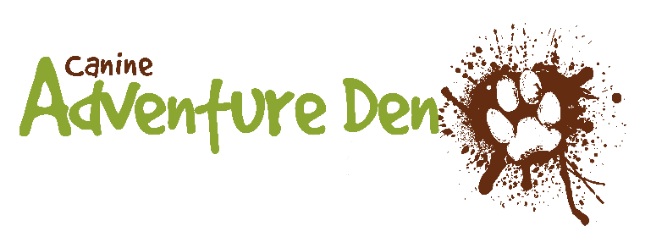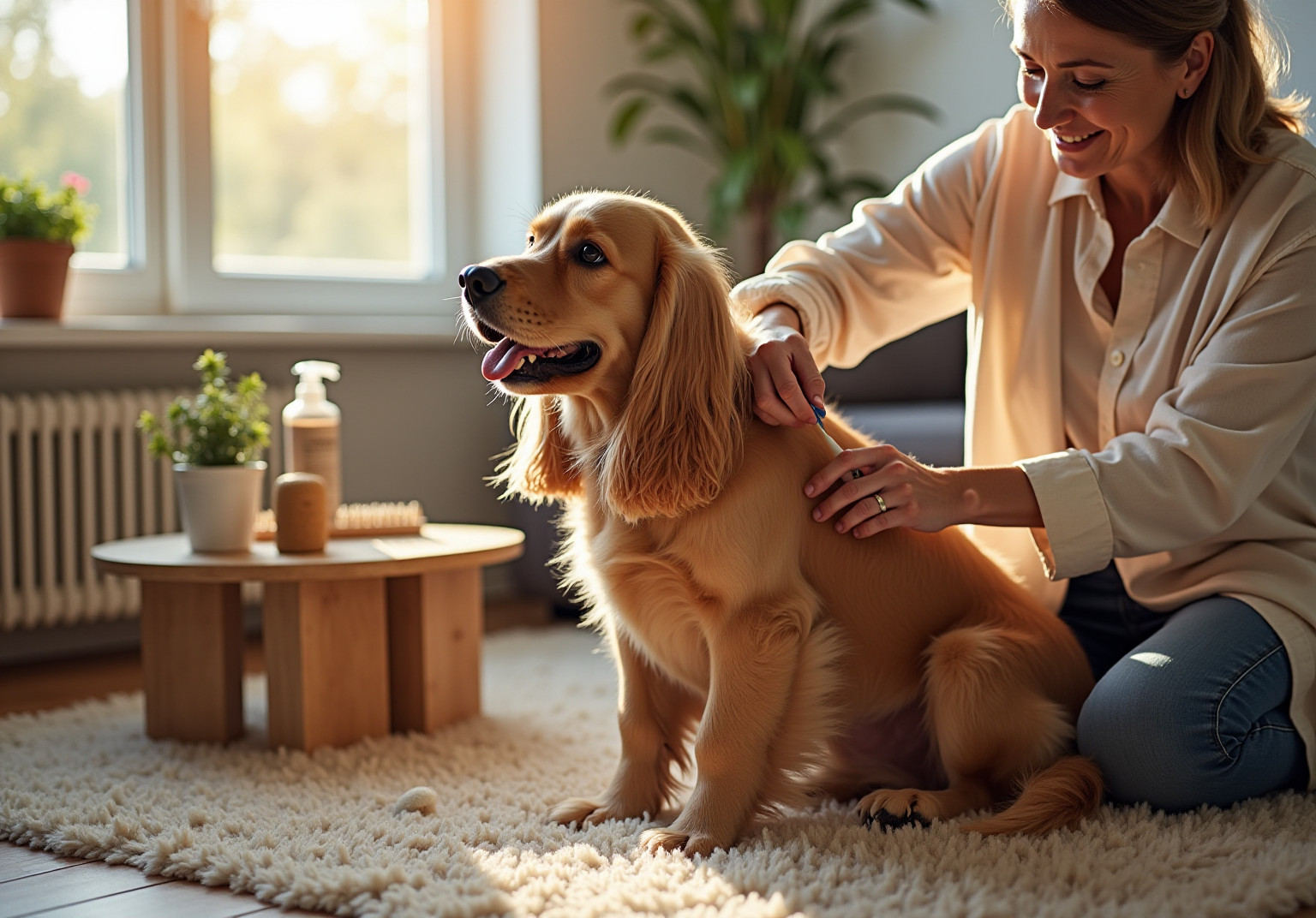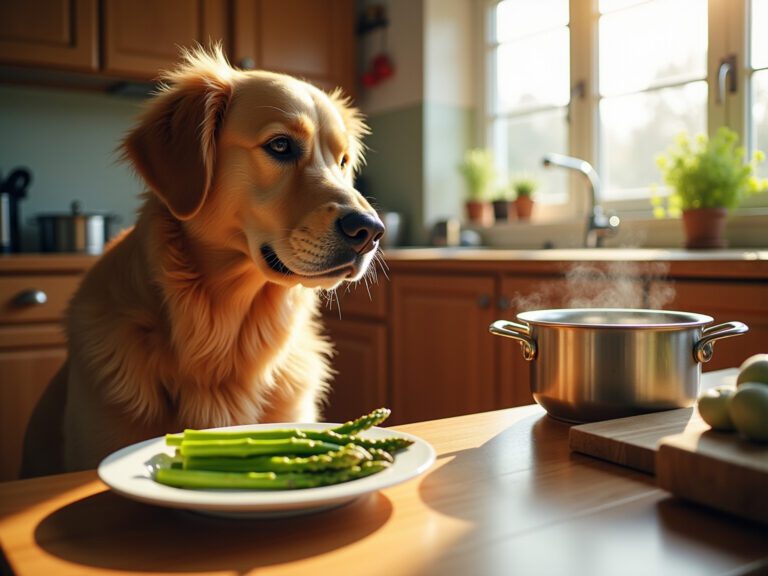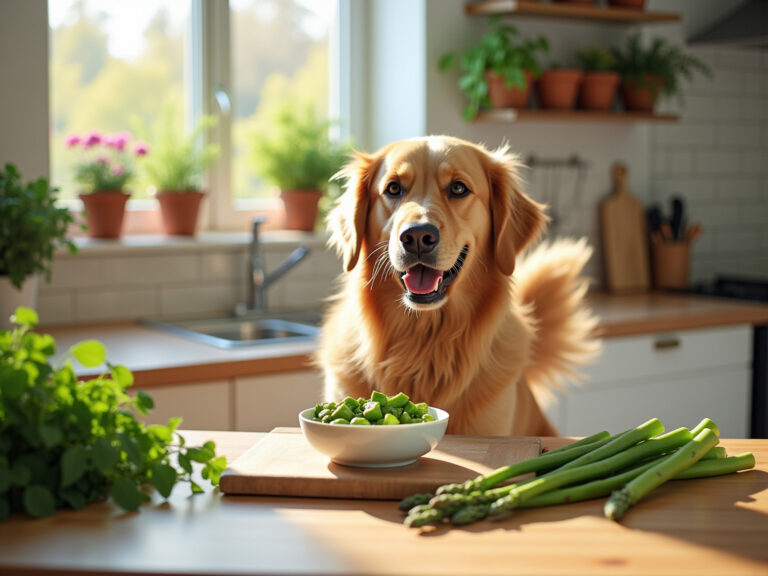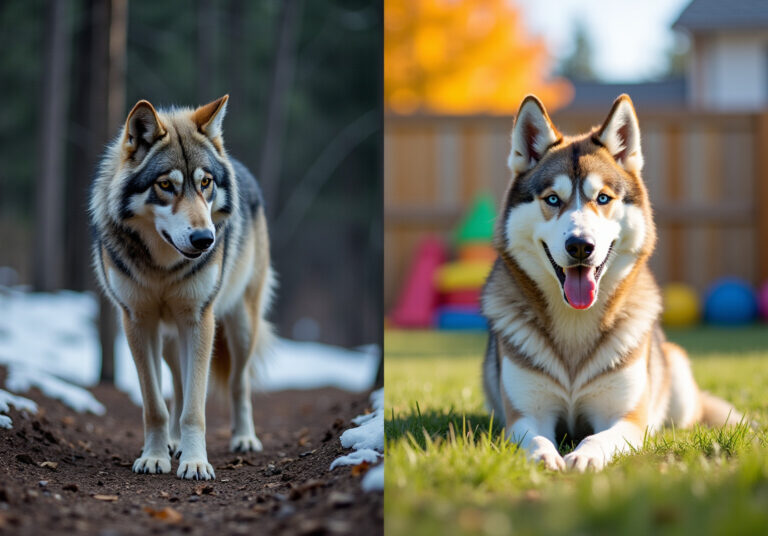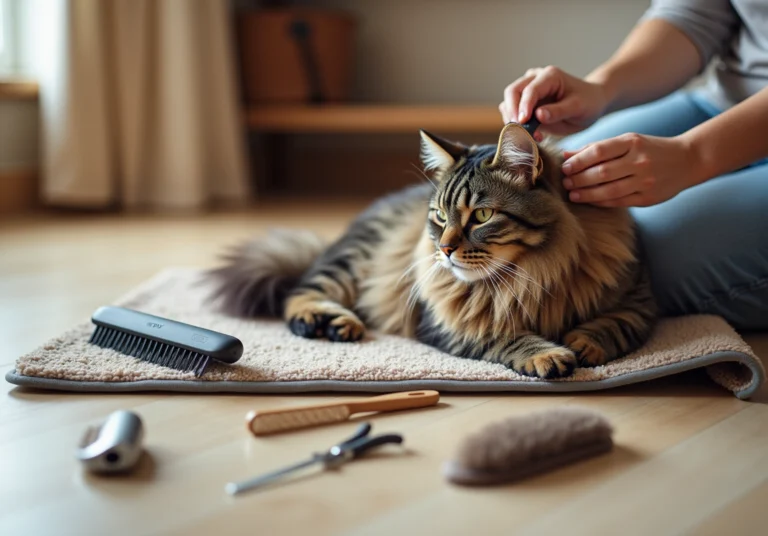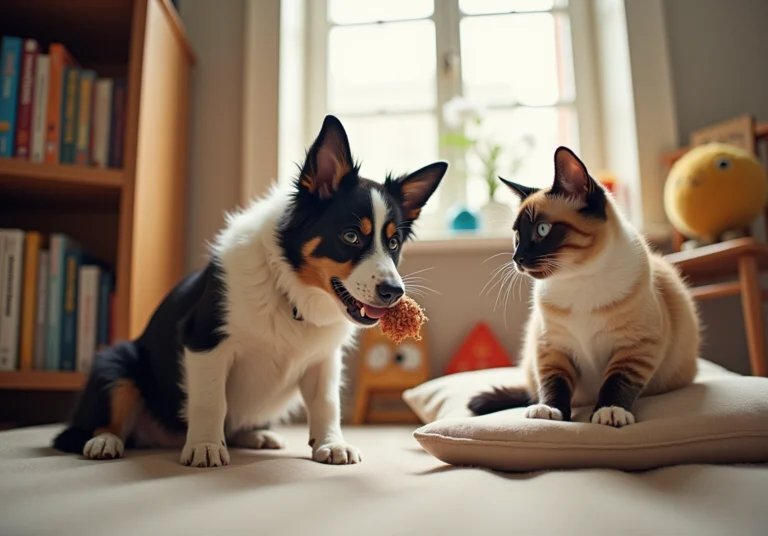Master Your Dog Brush: Techniques for Every Coat Type
Overview
This article lovingly explores the various techniques for grooming your furry family members, tailored specifically to their unique coat types, ensuring they receive the proper care and comfort they deserve. It thoughtfully details the different coat types—short, medium, long, curly, and wiry—alongside the appropriate brushing tools and techniques. Understanding these factors is not just beneficial; it is crucial for maintaining a healthy and happy dog. By nurturing this understanding, we can create a more harmonious environment for our pets.
Introduction
Grooming your dog is more than just a chore; it’s a cherished opportunity to bond and ensure the health and well-being of your beloved pet. We understand that with various coat types and grooming needs, navigating the nuances of dog grooming can feel overwhelming. By identifying your dog’s specific coat type and selecting the right tools, you can master the techniques that make grooming a joyful experience.
This guide delves into the essentials of effective grooming, addressing common challenges and offering practical solutions. Imagine transforming grooming from a daunting task into a rewarding experience for both you and your furry family member. Together, we can create a nurturing environment where your pet thrives.
Identify Your Dog’s Coat Type
Understanding your dog’s coat type is essential for their well-being and happiness, and using the appropriate dog brush is a key part of this. By observing specific characteristics, you can ensure your furry family member receives the best care possible.
Short Jackets: These garments lie flat against the skin and are typically smooth. Breeds like Beagles and Boxers fall into this category. They require less frequent brushing, usually just once a week, allowing for a low-maintenance grooming routine that keeps them comfortable.
Medium Jackets: With slightly more texture, these coats might need brushing every few days. Breeds such as Cocker Spaniels and Border Collies thrive with a little extra attention. Using a bristle or slicker tool will help maintain their fur smooth and free of mats, ensuring they feel their best.
Long Coats: Long-haired breeds, like Golden Retrievers and Shih Tzus, require daily brushing to prevent tangles and mats. A smoother tool is perfect for these fur types, providing the care they deserve and keeping their coat looking stunning.
Curly Fur: Breeds such as Poodles have curly fur that needs frequent maintenance to avoid matting. Utilizing a pin tool along with a detangling spray can make the grooming process easier and more enjoyable for both you and your pet.
Wiry Fur: Breeds like the Airedale Terrier possess wiry fur that may need hand-stripping or specific styling methods. A slicker tool can help maintain their unique texture, ensuring they stay looking sharp and well-groomed.
By identifying your dog’s coat type, you can choose the appropriate grooming tools, including a dog brush, and techniques, creating a nurturing environment that keeps their coat healthy and looking its best. Remember, your love and care make all the difference in their grooming journey.
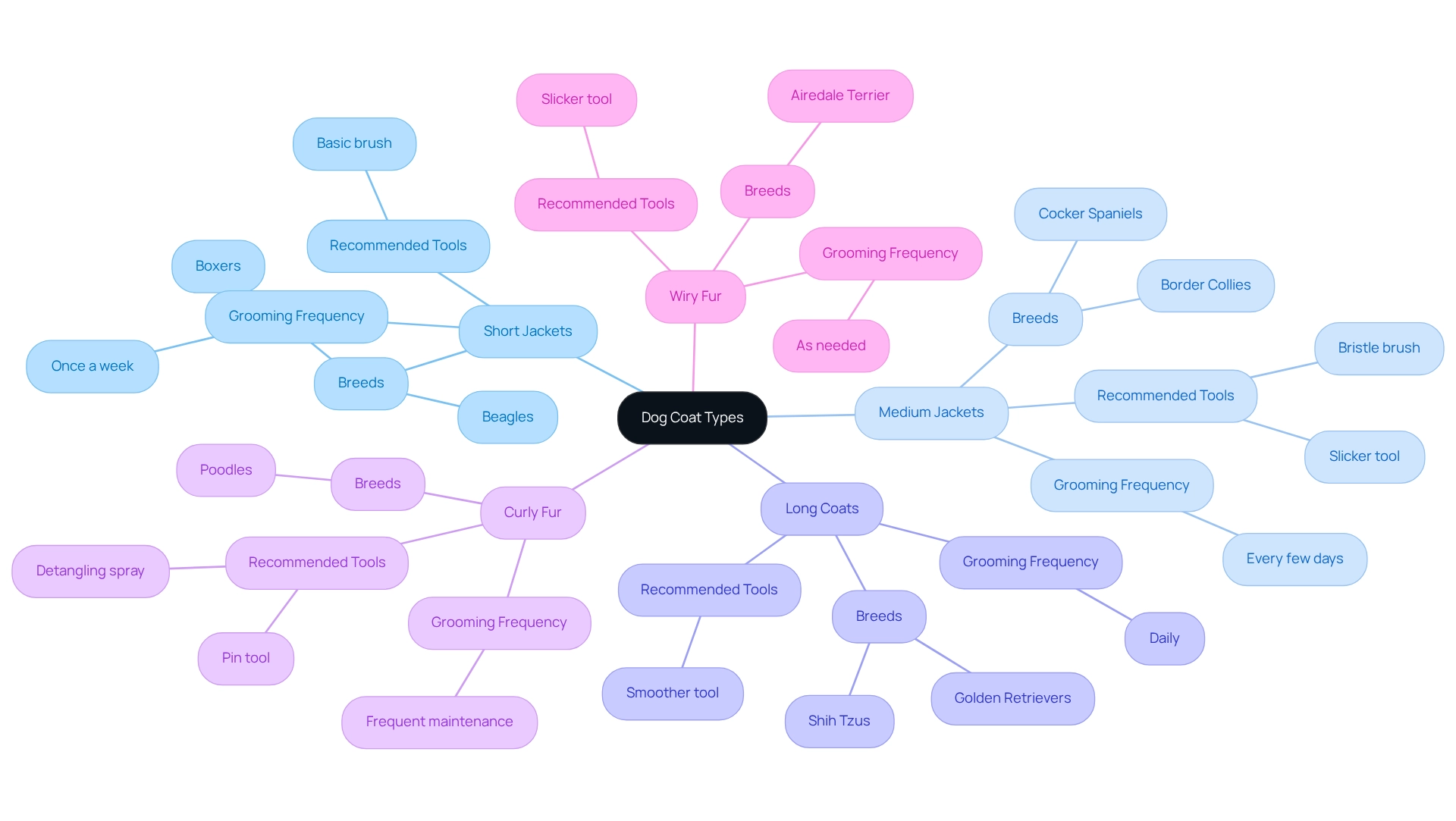
Explore Different Types of Dog Brushes
As a loving pet owner, you want the best for your furry family members. Understanding the different types of dog brushes and their uses can greatly enhance their grooming routine. Here are the main types of dog brushes that can help you nurture your pet’s coat:
-
Slicker Tools: Perfect for removing loose hair and detangling mats, slicker tools feature fine, short wires close together. They work wonders on long and medium fur, ensuring your pet looks and feels their best.
-
Dog Brush: These tools, featuring soft, natural bristles, are excellent for short-haired dogs. They help spread natural oils, promoting a shiny and healthy coat, which is essential for your pet’s well-being.
-
Dog Brush: Versatile for various fur types, a dog brush with widely spaced pins assists in detangling and removing loose hair. They are particularly effective for medium and long fur, making grooming a more pleasant experience.
-
Dog Brush: Specifically designed for double-coated breeds, a dog brush such as an undercoat rake helps remove loose undercoat hair, significantly reducing shedding. They are a must-have for breeds like Huskies and Golden Retrievers, ensuring a cleaner home and a happier pet.
-
Dog Brush: Ideal for short-haired dogs, this dog brush can also be used during baths to massage the skin and remove dirt, making bath time a soothing experience.
-
Dog Brush: This specialized dog brush is designed to remove loose fur from the undercoat, making it perfect for heavy shedders. They can dramatically reduce shedding around the house, creating a more comfortable environment for you and your pet.
By selecting the appropriate tool for your dog’s coat type, you can enhance the grooming experience for both you and your beloved pet. Your commitment to their care fosters a nurturing environment where they can thrive.
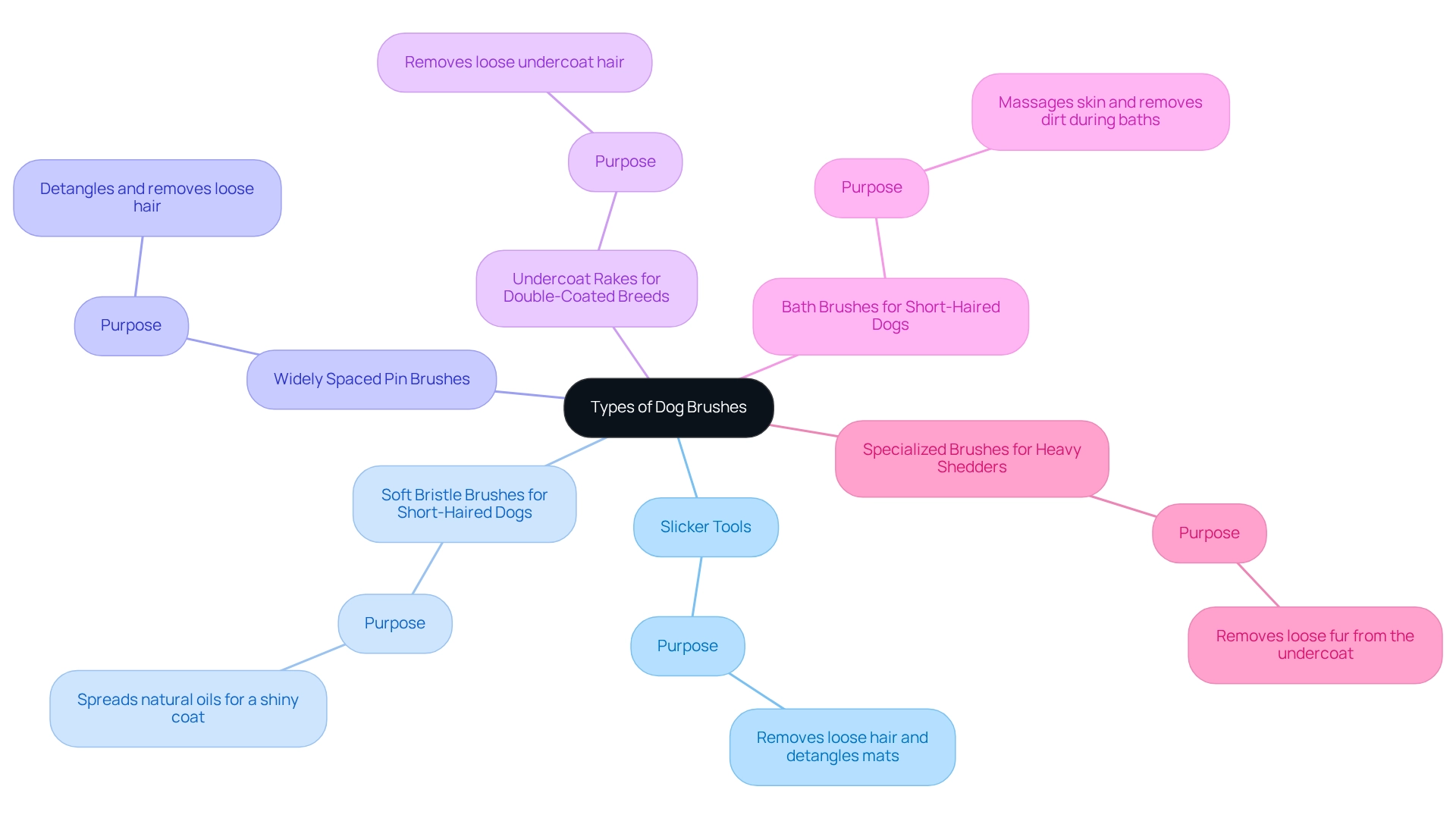
Learn Proper Brushing Techniques
To brush your dog effectively and create a nurturing experience, follow these steps:
-
Choose the Right Time: Select a calm moment when your furry family member is relaxed. It’s best to avoid brushing right after playtime or meals, as this can lead to discomfort.
-
Start Slowly: Introduce the grooming tool gradually. Allow your dog to sniff it and become comfortable before you begin the brushing process, ensuring they feel safe and secure.
-
Dog brush: Always use a dog brush in the direction of hair growth to prevent pulling and discomfort. For long-haired dogs, start from the tail and work your way up, respecting their natural flow.
-
Use a dog brush for effective grooming: Use gentle strokes with a dog brush; apply gentle pressure while brushing. Be mindful not to press too hard, especially on sensitive areas like the belly and underarms, as your dog deserves a tender touch.
-
Be Mindful of Mats: If you encounter mats, use your fingers to gently separate the hair before brushing. For stubborn mats, consider using a detangling spray to ease the process and keep your dog comfortable.
-
Dog brush: After using the dog brush, reward your dog with treats or praise to create a positive association with grooming. This reinforces trust and makes future sessions more enjoyable.
-
Consistent Care Routine: Establish a consistent care regimen tailored to your dog’s fur type. This will help maintain their coat in good condition and make grooming easier.
By following these compassionate techniques, you can ensure that grooming becomes a pleasant experience for your dog, fostering trust and cooperation in your nurturing environment.

Troubleshoot Common Brushing Issues
Here are some common brushing issues you might encounter with your furry family members and how to resolve them with love and care:
-
If your dog resists the dog brush, it’s important to approach the situation gently. Start with short sessions to help them adjust, gradually increasing the duration. Reward their calm behavior with treats to create a positive association.
-
Mats and Tangles: For dogs with long or curly coats, mats can be a frequent concern. Use a detangling spray and a wide-toothed comb to gently work through any tangles before you use a dog brush. This will not only make the process smoother but also more enjoyable for your pet.
-
Skin Sensitivity: If your dog has delicate skin, consider using a gentler tool or a bathing glove. Always brush with care, avoiding areas that seem particularly sensitive. This will help ensure their comfort during grooming.
-
Excessive shedding: If you notice your dog shedding more than usual, it may be time to use a dog brush for a thorough brushing session. A deshedding tool can help remove loose undercoat hair and reduce shedding, making your home a more comfortable place for both of you.
-
Brushing Too Hard: If your dog shows signs of discomfort, such as flinching or attempting to escape, it’s a sign you may be brushing too hard. Adjust your technique to use lighter strokes, ensuring a gentle touch that keeps your dog relaxed.
-
Irregular Care: Establishing a regular grooming schedule is key to preventing mats and excessive shedding. Consistency not only helps your dog become accustomed to the process but also strengthens the bond you share.
By addressing these common brushing issues with care and understanding, you can create a more enjoyable grooming experience for both you and your beloved pet. Remember, a nurturing environment fosters trust and comfort, making grooming a positive routine for your furry family member.
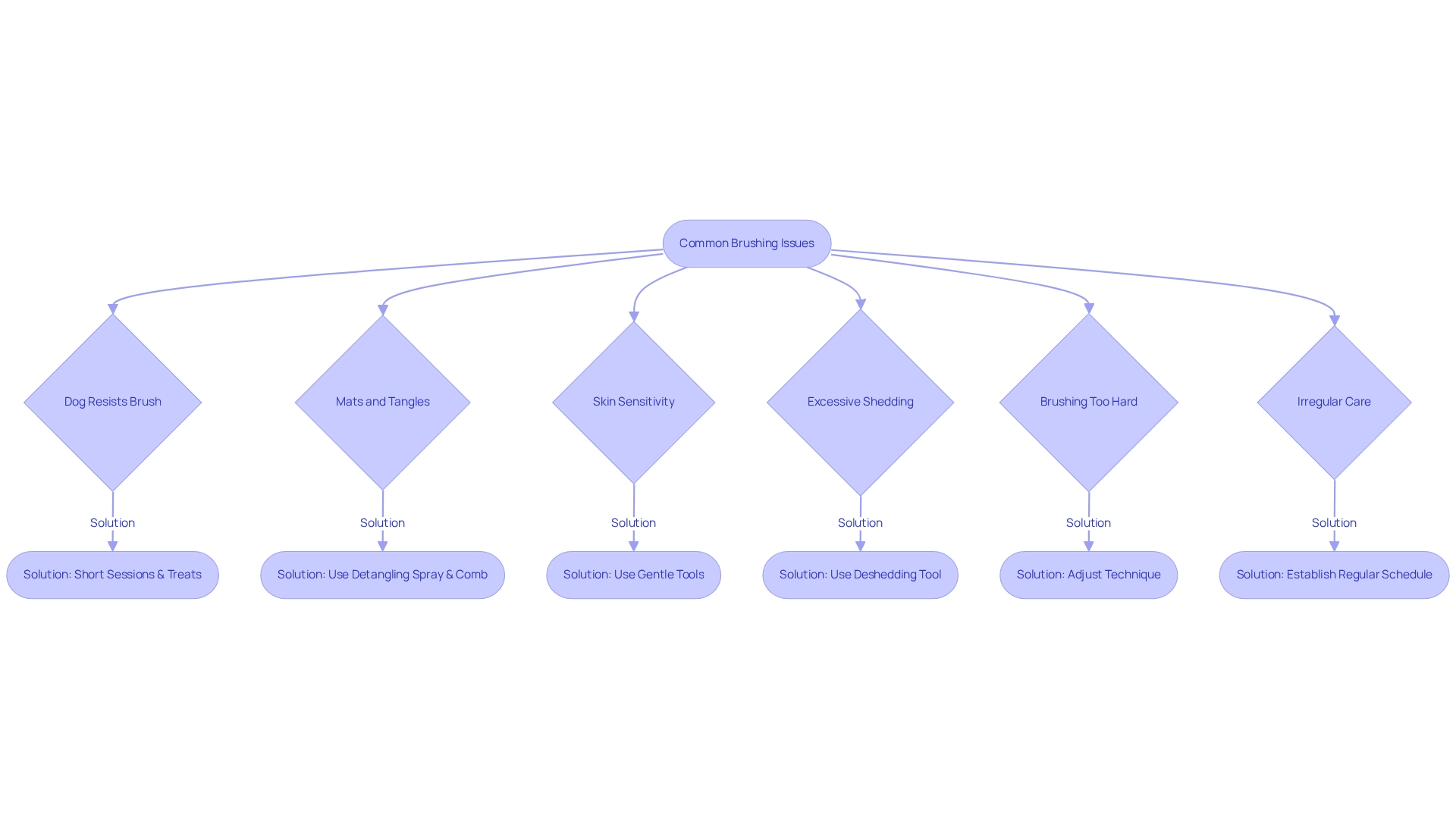
Conclusion
Understanding the intricacies of dog grooming can transform what may seem like an overwhelming task into a rewarding bonding experience with your furry family member. By identifying your dog’s coat type, you can select the right tools and techniques to ensure their fur remains healthy and beautiful. Whether your dog has a short, medium, long, curly, or wiry coat, using the appropriate brush and following effective grooming methods will not only enhance their appearance but also promote their overall well-being.
Incorporating proper brushing techniques and addressing common grooming challenges will further enrich this experience. From rewarding calm behavior to establishing a consistent grooming routine, these practices foster trust and cooperation between you and your pet. Remember, grooming is not just about aesthetics; it is an essential aspect of your dog’s health that helps prevent matting, reduces shedding, and strengthens the bond you share.
Ultimately, embracing the art of grooming allows pet owners to nurture their furry companions in a loving and attentive manner. With patience and the right approach, grooming can become a cherished ritual that both you and your dog look forward to, ensuring a happy and healthy life together. So, take that step towards a nurturing environment for your beloved pet—your journey into the world of grooming awaits!
Frequently Asked Questions
Why is it important to identify my dog’s coat type?
Identifying your dog’s coat type is essential for their well-being and happiness, as it helps you use the appropriate grooming tools and techniques for their care.
What are the characteristics of short jackets in dog coats?
Short jackets lie flat against the skin and are typically smooth. Breeds like Beagles and Boxers fall into this category and require less frequent brushing, usually just once a week.
How often should I brush dogs with medium jackets?
Dogs with medium jackets, such as Cocker Spaniels and Border Collies, should be brushed every few days to maintain their fur and prevent mats.
What tools are recommended for brushing medium-coated dogs?
A bristle or slicker tool is recommended for brushing medium-coated dogs to help keep their fur smooth and free of mats.
How should I care for dogs with long coats?
Long-haired breeds, like Golden Retrievers and Shih Tzus, require daily brushing to prevent tangles and mats. A smoother tool is ideal for these fur types.
What special care do curly fur breeds need?
Curly fur breeds, such as Poodles, need frequent maintenance to avoid matting. A pin tool and detangling spray can help make the grooming process easier.
How do I groom dogs with wiry fur?
Breeds with wiry fur, like the Airedale Terrier, may require hand-stripping or specific styling methods. A slicker tool can help maintain their unique texture.
How does proper grooming affect my dog’s coat?
Proper grooming helps keep your dog’s coat healthy, looking its best, and prevents issues like tangles and mats, contributing to their overall comfort and happiness.
